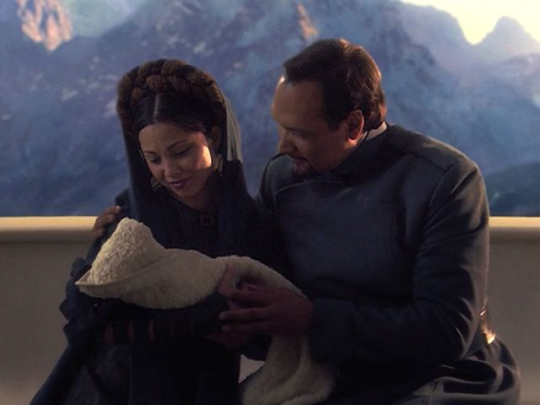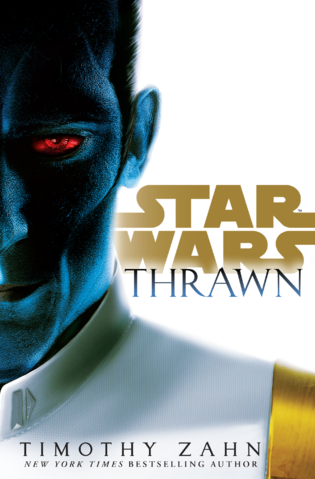—major Phasma spoilers ahead—
 It’s interesting that both of these books have come out in close proximity to each other. Each exists to promote a different item – Phasma is a Journey to the Last Jedi book, while Battlefront II: Inferno Squad tells you exactly what it is about. Both give an Imperial viewpoint, but they do so in very different ways.
It’s interesting that both of these books have come out in close proximity to each other. Each exists to promote a different item – Phasma is a Journey to the Last Jedi book, while Battlefront II: Inferno Squad tells you exactly what it is about. Both give an Imperial viewpoint, but they do so in very different ways.
Inferno Squad puts us in the position of four highly skilled Imperials – fighter pilots, military mechanic, and intelligence officer – and shows us how they view the world. Phasma is a biographical tale of its enigmatic lead, but is wrapped up in a far more interesting story of conflict with a First Order true believer. Of the two books I found Phasma the easier read. Both books sketch a very unpleasant picture, but only Inferno Squad attempts to give the reader an inside perspective of the Empire. The equivalent picture for the First Order and Phasma’s view of it is never covered in Phasma, instead it’s a story of how others perceive her.
It comes down to brutal honesty versus salesmanship. Inferno Squad seems to want to sell the reader on the worth of Imperial ideals. Phasma does not care about that, she does not care about you. You don’t like how she does things? Phasma says fuck you. She’s too harsh? Phasma says fuck you. Can’t she look out for anyone other than number one? Phasma says fuck you. The reader still gets a very clear picture of who and what Phasma is all about, but there is a lack of justification offered. There is character in Phasma who is all about justified belief and that’s Cardinal, the red stormtrooper who wants to know her origin.
Inferno Squad gives the most extreme, hardcore Imperial viewpoint there has ever been. There have been Imperial characters before – Legends’ Jahan Cross in Agent of the Empire, Baron Fel in X-Wing, more recently Rae Sloane in A New Dawn / Aftermath, however, in all three cases, it was either very clear they did not care for superweaponry as represented by the Death Star or they were ambiguous in their support of it. Inferno Squad dispenses with this and gives us Iden Versio, who we first encounter defending the Death Star at the Battle of Yavin while she still exults in the destruction of Alderaan by it. Just to hammer the point home further, if this first impression was not sufficient, the squad later drinks a bottle of Alderaanian wine as a celebration. Read More

 because it’s hard to be objective about Leia: Princess of Alderaan. I’ve long wanted a young Leia book, and there were only three authors that I trusted to write it:
because it’s hard to be objective about Leia: Princess of Alderaan. I’ve long wanted a young Leia book, and there were only three authors that I trusted to write it:  Timothy Zahn made a grand return to the Star Wars canon with his book Thrawn. Its release timing was perfect for publicity, out a scant few days before the opening of Celebration Orlando, but that was part of the reason for a delay in any article on this site actually talking about it. Another reason for that delay is that the book is very good, a return to form for Tim Zahn, so a review would not be all that interesting. A simple quality check of the book would be redundant at this point since we would just be adding a voice to the chorus. Thus, rather than heap more praise onto it, we intend to instead analyze its portrayal of the two lead characters – Thrawn and Arihnda Pryce – and how they tie into Star Wars Rebels.
Timothy Zahn made a grand return to the Star Wars canon with his book Thrawn. Its release timing was perfect for publicity, out a scant few days before the opening of Celebration Orlando, but that was part of the reason for a delay in any article on this site actually talking about it. Another reason for that delay is that the book is very good, a return to form for Tim Zahn, so a review would not be all that interesting. A simple quality check of the book would be redundant at this point since we would just be adding a voice to the chorus. Thus, rather than heap more praise onto it, we intend to instead analyze its portrayal of the two lead characters – Thrawn and Arihnda Pryce – and how they tie into Star Wars Rebels. (Note: This review is attempting to be spoiler-light – it’ll describe the main characters and that’s essentially it.)
(Note: This review is attempting to be spoiler-light – it’ll describe the main characters and that’s essentially it.)